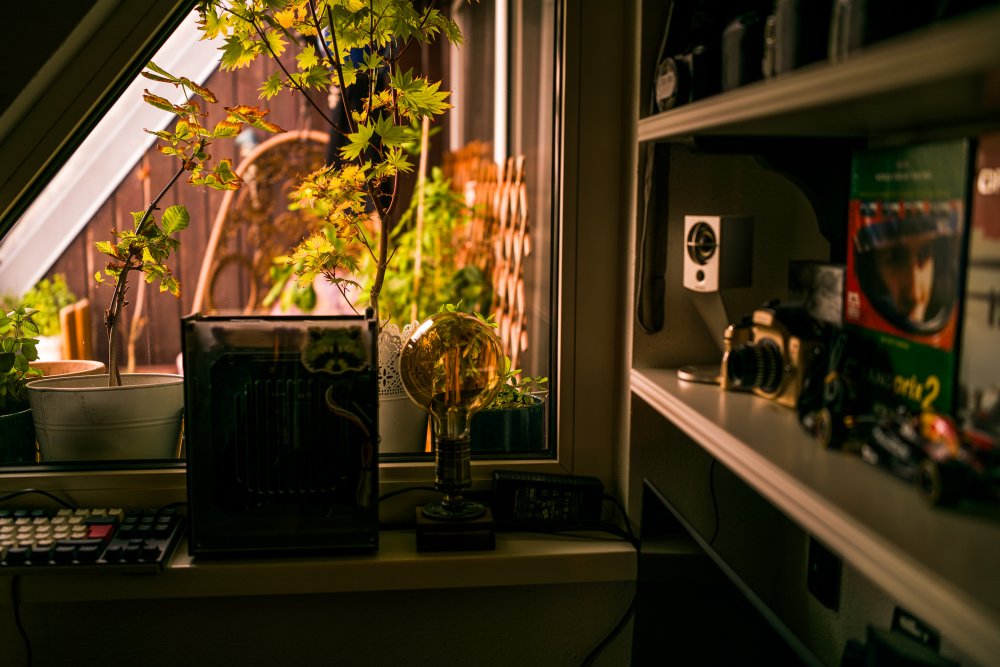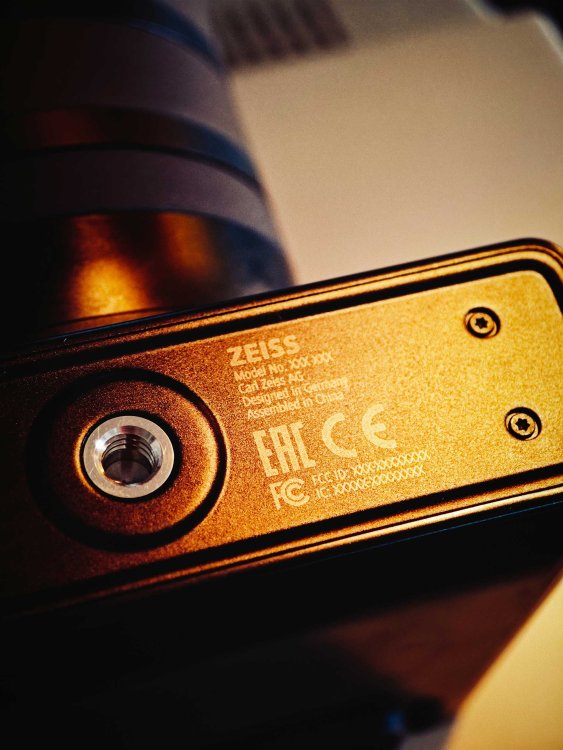Leaderboard
Popular Content
Showing content with the highest reputation on 07/08/2025 in Posts
-

Arri is the new Adobe
Davide DB and one other reacted to Andrew Reid for a topic
Surely the main point is that if you can afford to shoot ARRI Alexa 35 you are not quibbling over software licensing fees over the week(s) long duration of a shoot. Whereas with Adobe they scavenge £ from grandmothers and students for years and years.2 points -
Arri is the new Adobe
alsoandrew and one other reacted to Ilkka Nissila for a topic
In Arri's case they offer (1) Alexa 35 with all features included in the purchase price, (2) Alexa 35 base model with the most commonly used features enabled, and (2a) subscription to optional features that you may need for a specific project, (2b) permanent licensing of those features that you want to keep, so the subscription is just one option and permanent licenses to those features are available if you want them. I don't understand what the issue is. Having more options in how the payment is made is good and means more people/companies will be able to afford the stuff. No one is complaining that leasing or renting cars (or getting a taxi ride) are available in addition to the option of purchasing and owning a car. Public transport tickets are available on a single trip, load value, or pay for use for a period of time basis. Again no one is complaining about the existence of these options. Why then is subscription software or firmware as an option a problem? I think people are complaing about these things because they don't understand that software development costs money and if you want to continue developing a particular piece software in the future you probably need to keep those same people who developed it continuously employed so that you can do it efficiently in the future. If you have to let the people who developed something go, to add features, the cost is multiplied because no one new initially understands the existing code. The subscription model works best for software because it enables continued employment so the knowledge of how the software works internally is not lost. Today since operating systems are continuously changed, the applications software also needs frequent maintenance. So for Adobe the subscription model works best. They are able to maintain broad hardware support and have a huge library of cameras and lenses that are supported in terms of raw processing and lens corrections. The subscription cost is really low for the (still) photography software kit (LR + PS) and while the other stuff is kind of expensive, it was always expensive even in the then-thought-permanent license era. And as there are free or inexpensive options available for the tasks which Adobe prices expensively (Davinci Resolve instead of Premiere Pro), there is something for everyone available in the market. What would be much worse is that people rely on a particular product and have a lot of material made with it and suddenly those files could not be opened or edited as a result of the company making the software ending their operations or support of the product.2 points -
Arri is the new Adobe
alsoandrew and one other reacted to eatstoomuchjam for a topic
I only made it about 5 minutes through the video before I got bored with it so maybe he addresses some of this after that. But I'm not sure why it's news that Arri give people an option to buy the full camera or a base model that disables some features until they're enabled. That's been a thing for a long time. When one buys the base model, there are options to pay to enable those features on a temporary or permanent basis. It's one of the reasons that when you see used Arris for sale, they'll frequently say things like "includes high-speed license" or "includes raw license." Speaking for myself, I kind of hate subscriptions in general for this kind of thing, but that is very much mitigated by having the option for a permanent license. I still don't like it a lot since (in most cases), it's not really reducing the camera price. In the case of things like the GH4/5, it's not like Panasonic would have needed to charge more for the camera if they just threw in vlog-l. In Arri's case, I suspect that the decision was pushed by big rental houses - if I'm a rental house, a reduced cost base model lets me buy more cameras. Add a license to enable certain features and I can just tack that onto the price of the rental. Renting for a week? X dollars. You want raw on that rental? Add Y dollars. Camera reaches end of service life, the buyer can turn on any feature they want on a permanent basis. I don't love it, but it's not terrible.2 points -

Panasonic Lumix S1R Mark II coming soon
eatstoomuchjam reacted to MrSMW for a topic
Bingo. If you are a paid up member of the L Mount Alliance, then you use an S5ii for this specific task. Otherwise the rest of this overheating hype is just that, over-excited hype. OK I get the expectation that just because the S5ii or the FX3 can do X then the new Lumix cameras should, but actually maybe not and the S1Rii especially is a photo-centric hybrid that can do excellent video and even the S1ii is not really a ‘cinema’ camera but a hybrid. Just use the right tool for the job!1 point -
Arri is the new Adobe
Davide DB reacted to KnightsFan for a topic
As much as subscription models suck for us individuals, they are often preferable for businesses, even regarding software like Adobe. Obviously Arri's target market is rental houses, and the comment earlier about a rental house passing those temporary upgrades to customers is quite likely the intent. It's worth spelling out the difference between subscription editing software and camera upgrades, though. With Adobe's product, if you stop paying, you can't open your old projects. In Arri's model, if you stop paying, you can presumably still open files shot with those upgrades. Losing access to the creative work that you've already done is a big difference.1 point -
Arri is the new Adobe
Davide DB reacted to eatstoomuchjam for a topic
I thought/assumed that the choice of cameras for f1 were similar to the reason that studios have been using Ronin 4D for a bunch of stuff - and why the last couple of Mission Impossible films used Z Cams for the stunts - because there's no Arri that could possibly fit in the places where they put the custom Sony cameras (just as there's no Arri that can be usable on a gimbal as quickly as the R4D can be ready and because there's no Arri that can fit in a lot of the places that the Z Cam does). It's not to say that the Venice line isn't really good, it certainly seems to be, but on a movie with a budget of $100,000,000, the difference in price between shooting on Alexa and shooting on Venice is basically a rounding error.1 point -
Panasonic Lumix S1R Mark II coming soon
mtol reacted to Framed_By_Dan for a topic
I'd like to know too, especially about the S1II and using the Rec709 profiles (Natural specifically). Everyone who's reviewed the S1II has done so using V-Log or Raw. I've read that it's not quite as aggressively digitally sharp as the S5ii/S5iiX but still showing some heavy NR and smoothing of fine details. I might have to get a loan of one for myself to see whats what.1 point -
Arri is the new Adobe
Davide DB reacted to eatstoomuchjam for a topic
I was with you on "it's OK to have a license as long as there's an option for perpetual," but this is the part where you're losing me. Subscriptions, as currently implemented by companies like Adobe, are actually extremely consumer-hostile. You're right that it's good to have an ongoing source of revenue, but you're completely ignoring that they now have no impetus whatsoever to build features that people actually want. If I have Lightroom 5 and Adobe release Lightroom 6, I can look at the features that were added. If none of them are something I want, I keep using Lightroom 5. If Adobe completely misses the mark with customers, few or no people buy version 6 and they are forced to course correct or go out of business. If they go out of business, the copy of Lightroom 5 that I have keeps working forever. Maybe eventually it won't run on a new computer, but I have virtual machines or my old computer as options still. In a subscription world, I pay Adobe every month to keep using the software that I already have. They can waste as much time and money as they want on shitty new features that I don't want or care about. I still have to pay for them. They want to spend 1000 hours developing an integration between Lightroom and a stock photo site so they can pull extra revenue through a deal with the stock photo company? I don't care and I'll never use it. But I'm still paying for it. The company spends a bunch of time integrating their own cloud service which would charge me even more money to store my files? Don't want it, probably will never use it, still funding the development. If a competitor has different features that I want, I can certainly move to their software, but unless the interface is identical to what I'm used to, now I lose time and effort re-training on how to use the other software. They know that a lot of people aren't going to take that time and effort so the money keeps flowing in. Plus maybe I've spent hundreds of hours in something like the Lightroom catalog rating and tagging things or doing some other activity that isn't necessarily stored in the XMP sidecar (not sure if ratings and tags are) and moving that to another software package would eat a ton of my life. Stop using the software for a while? Sometimes subscriptions are easy to pause or stop, but a lot of times, they are a pain in the ass to stop. Once again, extra money keeps flowing in because people forget the subscription or give up on cancellation because they'll probably need it again sometime in the future. You are arguing against yourself here. If I own the software and it doesn't have to check a central license server every time it starts up, I can open my files in perpetuity. Virtual machines are a thing and allow running older software basically forever. On the other hand, if I had a file created in some version of Adobe's software in a format that isn't supported elsewhere (not sure if this exists) and I don't pay a ransom to Adobe, those files are now dead to me. Also, if Adobe decides to stop supporting that software because not enough people are paying the subscription, those files can never be opened again. Go offline for a month because you're traveling in the middle of nowhere and/or don't want to pay for a local sim? Sucks to be you, you won't be editing anything after a few days because the software can't phone home. This is increasingly a concern in the gaming industry as well - there's even a petition and a movement within Europe about it at https://www.stopkillinggames.com/ Companies intentionally build their games to require an online connection and if it's gone, the game stops working. Meanwhile, eventually most people stop playing and it costs money to run/patch/maintain the servers so the company turns them off. Wanna play that game that you loved a few years ago? Too bad. Even if you have it still installed on your computer, it now serves no purpose other than to waste disk space. Anyway, Adobe announce record profits all the time. I'm still using Lightroom about like I was 10 years ago. I should probably try Capture One again. I have kind of hated it every time I installed it, but at least their model is less offensive - option for a perpetual license or subscription, and if converting from subscription to perpetual, some of the subscription costs are prorated toward the purchase.1 point -

Panasonic GH7
Davide DB reacted to John Matthews for a topic
EH FILMS gave an interesting take on the GH7:1 point -

Zeiss ZX1 full frame Android prototype, let's repair
Juank reacted to Andrew Reid for a topic
According to a book, Dutch company ASML got into a big fight with Nikon a few years back. They both make lithography tools for semiconductors industry. ASML's optics supplier is Zeiss. To pressure Nikon into a settlement, they had to take the patent fight to them in cameras. So ASML got Zeiss to make them a camera. It also doubled as a marketing adventure, shown off in stores but rarely really ever in stock. Until one day this popped up on my radar, with the serial number XXX XXX. The AF wasn't working, or the manual focus (fly by wire), lens stuck at macro 30cm. So I cracked it open, mopping sweat off forehead. Inside is 256GB SSD, final release model was bumped to 512GB. Android 6, with Zeiss test suite of apps onboard including FCC certification test suite 🙂 A music player. A Dutch full frame 36 megapixel sensor with some analogue colour. A Zeiss 35mm F2 lens (but different optics to the Sony RX1), 4K video (Super 35mm crop) and an EVF. And some weird prototype issues. I'll make a YouTube video on it. Sample shot And I still have no idea how I fixed the AF. Just wiggled the lens and sensor ribbon cables a bit and it started working properly, but there was no sign of either cable being loose in the first place! It is quite a fun tool, and a bit different. Android is decently snappy on it, the camera app is well designed, the physical dials are lovely but it doesn't have a joystick or command dials... So a lot is on the touch screen, but it's well done. Shall I root it? Update to 3.0 production firmware? (Risks bricking it). Given the rarity factor... I probably won't!!1 point -
Except for the price... ; ) AF @ 100/120fps and... I don't agree at all when reviewer hints MFT is more flexible as far as glass options when you can put them directly to FX30 via MFT -> E-mount adapter but not the opposite. How many cool manual lenses you can have at your disposal? Unique control along with PZ lenses for tracking shots from several speeds, only to mention a single advantage. Clear Image Zoom another one. When people like this scriba here are used to buy the most spread lens mount option to fit the more number of different cameras as much as possible, this is also something to have in mind such as the Megadap ETZ21 adapter to couple E-mount lenses to diversify the setup towards those new Nikon camera releases without losing AF capability. Other than that, better IBIS, higher resolution 5.7K @50fps and open gate recording are neat GH7 advantages. That said, first contact with this guy. Loved the way he gradually answered my questions at same time I was following his clean input as every reviewer should try the best for. In my bookmarks from now on. - EAG1 point




